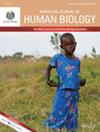A Demographic Study of Aste-Béon (Ossau Valley, Bearn), a Small Community From French Western Pyrenees in the 19th Century
Abstract
Objectives
To decipher the social behaviors and public health status of a 19th-century small Western Pyrenean community using various historical demography data.
Methods
From censuses, civil and parish registers of births, marriages, and deaths/burials, migration archives, and administrative records, we analyzed a series of demographic parameters in the village of Aste-Béon between 1801 and 1900.
Results
Acknowledging the limitations of such a historical demography approach (especially losses of data and underreporting of deaths of very young individuals), this study enabled us to draw a series of conclusions. We observed the usual demographic pattern shared by all Pyrenean communities, with a declining population during the second part of the century. A strong influence of agropastoral activity and Catholic practices on the social organization of this community was evidenced by the seasonality of conceptions and marriages. The disappearance of the traditional family and inheritance system at the end of the century was illustrated by a decreased age at marriage and a declining nuptiality rate. We confirmed the very high level of valley endogamy associated with a relatively intense degree of intra-valley marriage-associated mobility. A series of mortality crises related to epidemics (some cases documented: cholera, smallpox, and dysentery) was detected. Migration to Argentina and Uruguay was organized, especially between 1866 and 1872, including mainly nonfirstborn males who did not inherit familial property. The relatively low infant mortality rate, satisfactory lifespan, and absence of detectable increases in mortality during the winter months and periods of food scarcity argue in favor of a quite satisfactory sanitary level.
Conclusions
This historical demography study offers additional insights into the social organization and health status of a unique Western Pyrenean community during the 19th century.

 求助内容:
求助内容: 应助结果提醒方式:
应助结果提醒方式:


